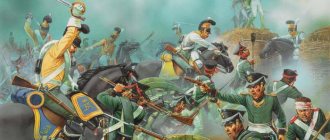Jan Komensky is a famous Czech teacher and writer. As bishop of the Czech Brethren Church, he gained great fame for his innovative classroom teaching methods.
In a short biography, it is quite difficult to describe in detail the amazing life and remarkable works of this thinker. But you will certainly learn everything you need about him right now.
We present to your attention the biography of Jan Komensky.
Biography of Jan Komensky
John Amos Comenius was born on March 28, 1592 in the small town of Nivnice, in the Czech Republic. His parents were believers and belonged to the Protestant community of the Bohemian Brethren. Besides him, there were four more children in the Kamensky family.
Childhood and youth
In 1604, presumably from the plague, his parents and two older sisters died. At the age of 16, Jan entered the Latin school in Přerov, where he studied for 2 years.
After this, Comenius continued his studies at the Reform Academy of Herborn. When he was 19 years old, he was baptized and became a priest of the Bohemian Brethren.
After finishing his studies in 1614, Jan returned home and began working as a teacher at school. After 2 years he was already a pastor. At the same time, Kamensky wrote the book “Latin Grammar”.
At this time, the Thirty Years' War (1618-1648) began, into which many European countries were drawn. It seriously affected the life and views of Kamensky, since the military conflict occurred as a result of the clash between Protestants and Catholics of the German Empire.
It is worth noting that this confrontation, which lasted about 30 years, was the last major religious conflict in history.
At this time, John Comenius wrote many articles aimed at returning his people to their rightful territories and faith. Soon he began to be persecuted, as did his brothers in faith.
As a result, the reformer ended up in Leszno, Poland, where he was in relative safety.
The first wife of Jan Komensky was Magdalena Vizovskaya, with whom he lived for 4 years. In 1622, she and their two children died of the plague.
2 years later, Comenius remarried, marrying the bishop's daughter Maria Dorothea.
Despite continuous wars and religious persecution, Comenius continued to engage in writing. One of his most famous works is the Great Didactics, in which he collected most of his works.
Comenius paid serious attention to the reform of knowledge. He constantly sought to improve his teaching methods.
In this regard, he published the book “Mother’s School”, in which he described in detail his vision for raising a child in the first 6 years of his life.
Recognition in society
In the early 1630s, the popularity of John Comenius began to gain momentum. His books were translated into different languages and aroused great interest in society.
For example, the textbook “The Open Door to Languages” (1631) made it possible to learn Latin faster and easier.
In this book, unlike its analogues, instead of traditional declensions, conjugations and rules, a description of reality was given.
Soon Jan Komensky wrote another book, “Christian Omniscience.” It was translated into English and published under the title "School Reform."
His vision of raising and educating children was completely new, as a result of which it was actively discussed in society.
Ian began to be invited to Great Britain and France, where he had many supporters. Cardinal Richelieu even invited him to continue working in Paris, promising to create all the necessary conditions for him. But Comenius refused.
Soon, he managed to meet Rene Descartes (see interesting facts about Descartes), whose name was known throughout Europe.
Unexpected popularity
In 1633, John Comenius unexpectedly gained European fame with the publication of Janua linguarum reserata (The Open Door to Languages), which was published that same year. This is a simple introduction to Latin according to a new method based on principles derived from Wolfgang Rathke and the textbooks published by the Spanish Jesuits of Salamanca. The reform of language teaching, which made it quicker and easier for all, was characteristic of the general reform of mankind and the world that all chiliasts sought to achieve in the remaining hours before the return of Christ.
John Comenius entered into an agreement with the Englishman Samuel Hartlibe, to whom he sent the manuscript of his Christian Omniscience under the title Conatuum Comenianorum praeludia, and then, in 1639, Pansophiae prodromus. In 1642 Hartlieb published an English translation entitled The Reform of the Schools. Jan Amos Comenius, whose contributions to pedagogy aroused great interest in certain circles in England, was invited by Hartlib to London. In September 1641, he arrived in the capital of Great Britain, where he met his supporters, as well as people such as John Pell, Theodore Haack and Sir Cheney Culpeper. He was invited to stay in England forever, and plans were made to create a pansophical college. But the Irish Rebellion soon put an end to all these optimistic plans, although Comenius remained in Britain until June 1642. While in London, he wrote Via Lucis ("The Way of Light"), which circulated in manuscript form in England until it was published in 1668 in Amsterdam. At the same time, the Czech educator received an offer from Richelieu to continue his activities in Paris, but instead he visited Descartes near Leiden.
Pansophia of Jan Komensky
Having settled in Sweden, Jan Comenius again encountered difficulties. Oxenstierna's management insisted that the teacher write interesting books to teach schoolchildren.
However, at that point in time, Kamensky was working on pansophia (teaching everyone everything). Moreover, this idea was gaining popularity among European scientists.
As a result, in 1651 he managed to finish writing an essay called “The Pansophical School.” It outlined the structure of the pansophical school, the principles of its work, the curriculum and the general daily routine.
In essence, this work was a model for the general acquisition of universal knowledge.
Youth
After graduating from religious school, Ian decides that he simply needs to enroll at Herrnborn Academy in order to achieve something significant in the future. After studying there for a while, he left the academy and entered the University of Heidelberg, which at that time was one of the most famous educational institutions. Noting the fact that this university produces excellent teachers and professors, Ian also decides to go into teaching.
His first work is the most complete and very useful dictionary called “Treasury of the Czech Language”, where he not only gives translations of many words that were incomprehensible at that time, but even indicates the scope of their application and features of use. By the way, the dictionary immediately came into general use, and was subsequently noted more than once by historians and linguistic researchers as the most complete encyclopedia of the Czech language of the 17th century.
After this, in 1614, Jan Komensky left for Přerov, where he became a teacher in one of the fraternal schools. By that time, he decides to write a book about the traditions and customs of his native country - Moravia. By 1618, the book was completely ready and even had a detailed map of the country.
Failure in Sárospatak
In 1650, Prince Sigismund Rakoczi from Transylvania invited John Comenius to discuss school reforms that were planned to be carried out in the near future.
In addition, Sigismund wanted to consider Comenius' pansophia in more detail. The teacher agreed to help the prince, and soon got to work.
In one of the schools he carried out many changes, but after several years no serious results followed.
Despite the lack of noticeable success, Comenius was able at this time to write the work “The Sensual World in Pictures,” which became a real breakthrough in pedagogy.
An image of Comenius on a bas-relief decorating a school building in Dolany (Czech Republic)
In it, Jan Komensky began to use pictures to study languages, which no one had done before. He will soon say that “words must be accompanied by things, and cannot be studied apart from them.”
An interesting fact is that modern methods for learning foreign languages also include color illustrations. In addition, pictures or images are used in most mnemonic techniques.
Childhood
Jan Komensky was born on March 28 in the small town of Nivnica. His parents were very religious people and completely devoted themselves to the church, so little Jan, almost from birth, strived to be like his parents and imitated them in every possible way.
As soon as a child turns 7 years old, he is sent to a school with a religious bias. However, in 1602, a tragedy occurs in a small town - a plague epidemic occurs, which wipes out half of the healthy population. Little Ian witnesses the monstrous deaths of both his parents and his sister, after which he withdraws into himself for many years. Nevertheless, he continues his studies, because this is what his deceased parents wanted, and by 1611 he was baptized, after which he received his middle name - Amos.
last years of life
After Jan Komensky returned from Transylvania to Leszno, war broke out between Sweden and Poland.
As a result, all of Comenius’ manuscripts were lost, and he himself had to move to another country again.
Comenius' next and last place of residence was Amsterdam. While living in this city, he completed a voluminous work, “The General Council for the Correction of Human Affairs,” consisting of 7 parts.
Jan wrote it over 20 years, and thus was able to summarize all his activities. And although fragments of the work were published at the end of the 17th century, it was considered lost.
In the 30s of the 20th century, the remaining 5 parts of the book were found. This work was published in full in Latin only in 1966.
John Amos Comenius died in November 1670 at the age of 78. He was buried in Naarden, near Amsterdam.
A man of his time
Jan Amos Comenius made no contribution to natural science and was deeply alien to the development of science that was taking place at that time. Other assessments of his work have been made, but they completely ignore his dependence on a priori postulates and his theological orientation. On the other hand, several distinguished members of the Royal Society have shown a close affinity with much of his thought. The society's motto, NULLius in Verba, figures prominently in Comenius' book Natural Philosophy Transformed by Divine Light, and in both contexts it has the same meaning. It is a reminder that tradition and authority are no longer the arbiters of truth. It is given to nature, and observation is the only source of concrete knowledge. The much debated problem of the relationship between Comenius and the early Royal Society is still unresolved, largely because the discussion of the issue is based on a scanty knowledge of his works and almost complete ignorance of his correspondence.
Claims about the influence of the Czech reformer on Leibniz are greatly exaggerated. He was such a typical manifestation of the beliefs, doctrines and problems of the time that the same thoughts were expressed by others who occupied a more prominent place in Leibniz's early work. Jan Amos Comenius drew his ideas from the theology of the Bohemian Brothers (with their strong chiliastic tendencies), as well as from such famous personalities as Johann Valentin Andreae, Jacob Boehme, Nicholas of Cusa, Juan Luis Vives, Bacon, Campanella, Raymund de Sabunde (Theologia naturalis which he published in Amsterdam in 1661 under the title Oculus fidei) and Mersenne, whose correspondence shows a positive attitude towards Comenius and his work.
Ideas and didactics of Jan Komensky
After reading the short biography of Comenius, we invite you to familiarize yourself with the main ideas of the great teacher.
Path of light
The Path of Light is a program developed by Comenius aimed at human enlightenment. Its main themes were piety, knowledge and virtue.
According to the author, a person could achieve wisdom only after mastering and applying all 3 qualities. From this it follows that the source and goal of all his works was theology.
Comenius paid great attention to God. He believed that a person must open himself to 3 revelations:
- visible creation, in which the power of the Creator is visible;
- a person created in the likeness of God;
- word, with its promise of good will towards man.
All knowledge and ignorance must be taken from 3 books: nature, reason (human spirit) and Holy Scripture.
In order to achieve such wisdom, an individual must use feelings, reason and faith.
Due to the fact that man and nature were created by God, they must have a similar order of things, thanks to which harmony can be achieved in everything.
Know yourself and nature
This doctrine of macrocosm-microcosm makes it possible to verify that a person can comprehend hitherto unrealized wisdom.
As a result of this, each individual becomes a pansophist - a little god. The pagans are unable to comprehend such wisdom due to the lack of the revealed Word, which, according to Christianity, is Jesus Christ.
According to John Comenius, a person needs to turn only to divine works and learn something through direct encounters with things.
He argued that all learning and knowledge begins with feelings. The life and world of any person is a school.
Nature teaches, the teacher is nature's servant, and naturalists are priests in the temple of nature. Based on all that has been said, every person should strive to know himself and nature.
Encyclopedia of Omniscience
This concept refers to the method by which a person is able to see the order of things, realizing their causes.
Thanks to this, each individual will be able to fully comprehend various knowledge. Moreover, man will be able to achieve the state in which he was before the fall of Adam and Eve.
Innovation in education
According to Jan Komensky, a child should be raised in such a way that he can compare things and words. When teaching him his native language, parents need to avoid empty words and complex concepts.
Books in educational institutions should be distributed into groups. That is, a child should be taught only what he is able to comprehend at a given time.
Life is like a school
Jan Komensky believed that all life is a school for a person and preparation for eternal life. Girls and boys should study together.
Teachers should not exert emotional pressure on students, much less subject them to physical punishment.
The learning process should take place in a playful manner. If a child cannot master this or that science, this is in no way his fault.
In his writings, Jan Comenius argued that pansophia should be at the heart of the transformation of humanity, while theology would be the guiding motive.
In his own works, the teacher used many quotations from the Holy Scriptures.
Among the biblical books, he was most interested in the prophecies of Daniel and the Revelation of John the Theologian.
He believed that by reading these books a person could gain the essential knowledge necessary for the biblical millennium.
Encyclopedia of Omniscience
To find a way out of the labyrinth, a person needs Ariadne's thread, a method by which he will see the order of things, understanding their causes. This method should be presented in a book of pansophia, in which the order of nature and the order of mind will gradually move towards wisdom and insight. It will contain nothing but concrete and useful knowledge, replacing all other books. A complete record of information organized in this way constitutes a veritable encyclopedia, much like Robert Hooke's "repository" of natural curiosities in the Royal Society, organized according to the categories of John Wilkins in his Essay on Genuine Symbolism and Philosophical Language. By following this natural method, people can easily acquire complete and comprehensive mastery of all knowledge. The result will be true universality; and again there will be order, light and peace. Thanks to this transformation, man and the world will return to a state similar to what it was before the Fall.





